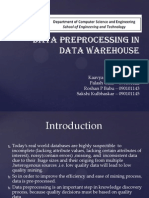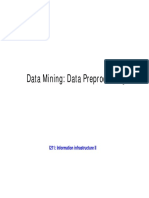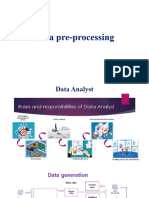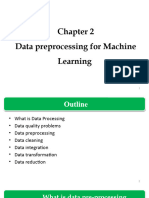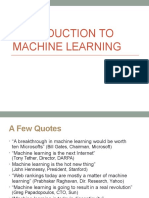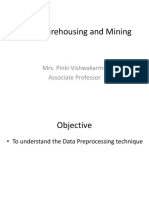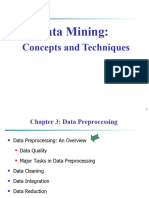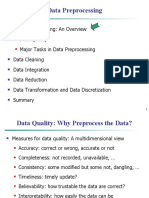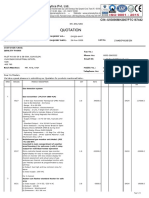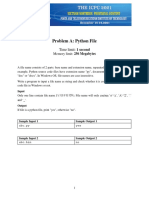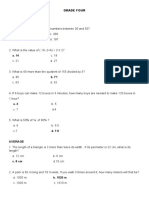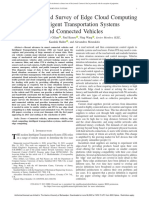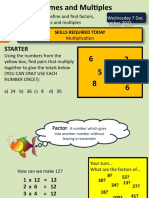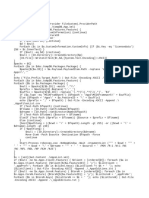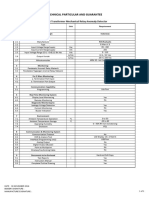0% found this document useful (0 votes)
32 views61 pagesLecture 3 Unit 1
The document provides an overview of data pre-processing in machine learning, emphasizing its importance for preparing raw data for model training. It covers key steps such as data cleaning, integration, transformation, and reduction, along with techniques to handle missing values, noisy data, and outliers. The document also highlights best practices for ensuring data quality and the significance of data cleaning in achieving accurate machine learning predictions.
Uploaded by
for181funCopyright
© © All Rights Reserved
We take content rights seriously. If you suspect this is your content, claim it here.
Available Formats
Download as PPTX, PDF, TXT or read online on Scribd
0% found this document useful (0 votes)
32 views61 pagesLecture 3 Unit 1
The document provides an overview of data pre-processing in machine learning, emphasizing its importance for preparing raw data for model training. It covers key steps such as data cleaning, integration, transformation, and reduction, along with techniques to handle missing values, noisy data, and outliers. The document also highlights best practices for ensuring data quality and the significance of data cleaning in achieving accurate machine learning predictions.
Uploaded by
for181funCopyright
© © All Rights Reserved
We take content rights seriously. If you suspect this is your content, claim it here.
Available Formats
Download as PPTX, PDF, TXT or read online on Scribd
/ 61

















